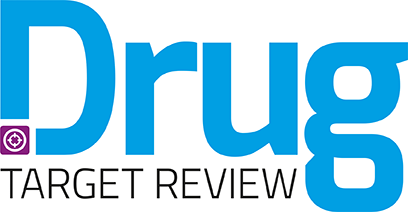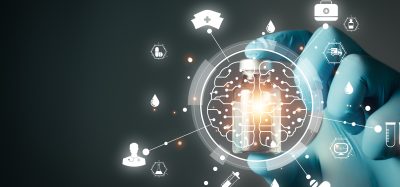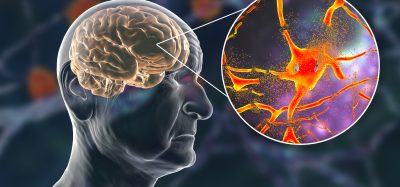Early evidence and emerging trends: How AI is shaping drug discovery and clinical development
Posted: 11 April 2025 | Alessio Zoccoli, Carlos N Velez, Remco Jan Geukes Foppen, Vincenzo Gioia | No comments yet
Drug development is plagued by high costs, long timelines and low success rates, but what if AI could change that? Read on to discover real-world examples and explore the transformative potential of AI in drug development.


Drug development is hampered by high costs, long timelines and a low probability of success and complex therapies exacerbate these challenges. While traditional artificial intelligence/machine learning (AI/ML) offers some benefits, generative AI, particularly when integrated with clinical genomics, presents a transformative opportunity. By integrating diverse data modalities, including clinical genomics, it can impact target identification, patient stratification and clinical trial design. Leveraging vast genomic datasets alongside other data and multimodal language models, this approach offers a deeper understanding of disease biology and enables more precise patient selection. This promises to significantly improve the probability of success for new drugs, accelerating their development and ultimately delivering life-saving treatments to patients faster. Examples of large-scale applications and future perspectives are presented.
Accelerating drug discovery with generative AI: case studies and timelines
Pioneering efforts in applying generative AI (GenAI) on a large scale to drug discovery emerged in 2017, with companies like Insilico Medicine and AstraZeneca, alongside academic laboratories. These early adopters explored GenAI’s potential across various research processes, including data collection, storage, and even the physical reorganisation of laboratory spaces to accommodate the growing need for data centres.
A recent study of 39 AI-native companies first showed the potential impact on probability of success (PoS), with an increase in Phase 1 PoS from the traditional range of 40-65 percent to an impressive 80-90 percent. Even excluding repositioned drugs, which could benefit from pre-existing toxicology and clinical data, a significant increase in PoS is still observed.
The effectiveness of AI in drug development is no longer just theoretical; it is supported by concrete results and documented success stories. A case in point is DSP-1181, the first AI-designed drug to enter the clinical phase, developed by a collaboration between Sumitomo Dainippon Pharma and Exscientia. The discovery phase took just 12 months, a fraction of the four to five years typically required with traditional approaches.
Equally significant is the case of Insilico Medicine, which demonstrated the ability to identify new drug targets and generate candidate molecules in just 18 months. During the COVID-19 pandemic, BenevolentAI used its AI platform to identify baricitinib as a potential treatment for the virus in just three days, an impressive example of rapid repurposing of existing drugs. Recently Recursion Pharmaceuticals’ unbiased, machine learning-powered genomics screen rapidly identified and advanced REC-1245. This is a potential first-in-class and highly selective RBM39 degrader targeting biomarker-enriched solid tumours and lymphoma. It moved from target identification to IND-enabling studies in under 18 months – more than twice as fast as the 42-month industry average. Insilico Medicine’s Rentosertib, an IPF drug, where both the target and compound were discovered using generative AI, has received its official USAN name.
Case study glaucoma trials: integrating AI, genomics and advanced imaging
The term ‘glaucoma’ refers to a collection of eye diseases in which the retina and optic nerve are irreversibly damaged. For most glaucoma patients, this damage is initiated by an elevation in intraocular eye pressure, which in turn can be caused by several factors. Approximately 10-20 percent of glaucoma patients have ‘normotensive’ glaucoma, which is essentially fulminant glaucoma associated with normal intraocular pressure. There are many drugs available (plus several surgical approaches) to lower intraocular pressure and manage vision loss. However, 10-25 percent of patients will still achieve partial or complete vision loss in one or both eyes, making glaucoma one of the leading causes of blindness globally. What makes glaucoma especially concerning is its prevalence. Estimates differ, but suggestions of over 100 million glaucoma patients worldwide by 2024 are not uncommon. Glaucoma is associated with an ageing population, making it an increasing health burden in parts of the world with rapidly-growing ageing populations.
AI is becoming increasingly important in the diagnosis and monitoring of glaucoma. Specifically, AI-based interpretation of retinal images has demonstrated to be a more sensitive and reliable approach to monitoring retinal health versus objective observation and image interpretation. AI-interpretation of retinal images has not reached the point of becoming accepted practice by the drug development regulatory agencies yet, but it is likely only a matter of time before standardised AI-based imaging protocols are incorporated into the development of new drugs to treat glaucoma, making these clinical studies much faster to complete versus conventional approaches. Indeed, clinical studies are already underway examining retinal imaging AI software and a blend of genotype and imaging data to identify rapidly-progressive patients as early as possible. These approaches are being extended to other eye diseases, such as diabetic retinopathy and macular degeneration, where earlier diagnosis is critical to preserve vision.
Imaging analysis is but a fraction of how modern tools and techniques are being applied in the diagnosis and monitoring of glaucoma. For example, it is increasingly understood that patient genetics may be used to identify patient subsegments earlier and more accurately, thereby potentially enabling a more personalised and effective approach to treating the disease. Fortunately, there is movement in this direction. Population-level genotyping, coupled with AI data processing and analysis, may be the key to unlocking a future in which glaucoma patients are not only diagnosed earlier, but also treated with a personalised approach that enables vision preservation for as long as possible.
These approaches may also have important implications in the development of novel drugs to treat a range of eye diseases, including glaucoma. Traditional drugs for eye diseases like glaucoma are small molecules delivered by simple eye drops. Today, complex proteins and genes are being injected directly into the eye to treat a variety of serious eye disorders. With these complexities comes a need to increase the probability of clinical success. One way is to take a multimodal approach, using AI-driven image analysis, patient pre-selection via genotyping, and other tools to increase an already low probability of clinical success.
Generative AI in drug discovery: early promise
While GenAI in therapeutic development has attracted considerable attention and sparked debate within pharmaceutical R&D, with investor sentiment still mixed, a recent transparent benchmark offers compelling initial evidence of its transformative potential. This benchmark, demonstrating the effectiveness of Insilico Medicine’s platform, spans a range of target novelty and disease complexity. In high-novelty areas, GenAI can explore uncharted therapeutic space to unlock treatments for previously intractable diseases. In moderate-novelty domains, and low-novelty/high-complexity areas, GenAI has demonstrated the potential to address complex diseases and accelerate the development of much-needed therapies. A critical advantage of GenAI, regardless of target novelty or disease complexity, is its ability to facilitate the crucial process of matching a drug’s mechanism of action to a specific indication and further refining that match to a relevant subpopulation within that indication.
A key driver of these accelerated timelines is the end-to-end patient-focused approach integrating GenAI and automation platforms. This streamlined process frees up valuable resources for further R&D, potentially leading to faster breakthroughs and more rapid paths to novel treatments. The critical questions now are whether the validation process of AI in drug discovery continues and whether the pharmaceutical industry will fully embrace this paradigm shift or remain tethered to traditional practices. While it is still relatively early days for AI-driven drug discovery, its judicious application, particularly with the integration of patient data and a focus on clinical relevance, has the potential to dramatically improve drug discovery efficiency and, crucially, success rates, ultimately benefitting patients.


Generative AI, especially when combined with clinical genomics and multimodality, offers a transformative opportunity to address the high costs, long timelines and low success rates plaguing traditional drug development. This is an AI-generated image.
About the authors


Remco Jan Geukes Foppen, PhD, is an AI and life sciences expert specialising in the pharmaceutical sector. With a global perspective, he integrates and implements AI-driven strategies that impact business decisions, always considering the human element. His leadership has driven international commercial success in areas including image analysis, data management, bioinformatics, advanced clinical trial data analysis leveraging machine learning and federated learning. Remco Jan Geukes Foppen’s academic background includes a PhD in biology and a master’s degree in chemistry, both from the University of Amsterdam.






Literature
- Geukes Foppen RJ, Gioia V, Zoccoli A, Velez CN. Using clinical genomics and AI in drug development to elevate success. (2025). Drug Target Review February Edition https://www.drugtargetreview.com/article/155906/clinical-genomics-ai-drug-success/
- Geukes Foppen RJ, Gioia V, Velez CN. AI, PoS, And ROI: An Alphabet Soup Of 21st Century Drug Development [Internet]. Lifescienceleader.com. 2024. Available from: https://www.lifescienceleader.com/doc/ai-pos-and-roi-an-alphabet-soup-of-st-century-drug-development-0002
- Geukes Foppen RJ, Gioia V, Velez CN. AI, PoS, And ROI: An Alphabet Soup Of 21st Century Drug Development [Internet]. Lifescienceleader.com. 2024 [cited 2025 Feb 7]. Available from: https://www.lifescienceleader.com/doc/ai-pos-and-roi-an-alphabet-soup-of-st-century-drug-development-0001
- Jayatunga M KP, Ayers M, Bruens L, et al. How successful are AI-discovered drugs in clinical trials? A first analysis and emerging lessons Drug Discovery Today, Volume 29, Number 6, June 2024. doi: 10.1016/j.drudis.2024.104009.
- Tham YC, et al. Global prevalence of glaucoma and projections of glaucoma burden through 2040: a systematic review and meta-analysis. Ophthalmology 121(11):2081.90, 2014. doi: 10.1016/j.ophtha.2014.05.013
- Coan LJ, et al. Automatic detection of glaucoma via fundus imaging and artificial intelligence: A review. Surv Ophthal 68(1):17-41, 2023. doi: 10.1016/j.survophthal.2022.08.005
- Tirendi S, et al. Genetics and Glaucoma: the state of the art. Front Med (Lausanne) 12:10:1289952, 2023. doi: 10.3389/fmed.2023.1289952.
- Stuart KV and Khawaja AP. Genomics enabling personalised glaucoma care. Br J Ophthalmol 18;108(1):5-9, 2023. doi: 10.1136/bjo-2023-324618.
- Navigating the AI revolution: a roadmap for pharma’s future. PART 2. Remco Jan Geukes Foppen, Vincenzo Gioia, Alessio Zoccoli and Carlos N. Velez (2025). A Featured Article in Drug Target Review March Edition https://www.drugtargetreview.com/article/157270/navigating-the-ai-revolution-a-roadmap-for-pharmas-future/
- First AI-designed drug, Rentosertib, officially named by USAN, (2025) Drug Target Review March Edition https://www.drugtargetreview.com/news/157365/first-ai-designed-drug-rentosertib-named-by-usan/
Related topics
Artificial Intelligence, Big Data, Clinical Trials, Drug Development, Drug Discovery, Genomics, Machine learning, Precision Medicine
Related people
Alessio Zoccoli, Carlos N Velez, Remco Jan Geukes Foppen, Vincenzo Gioia








